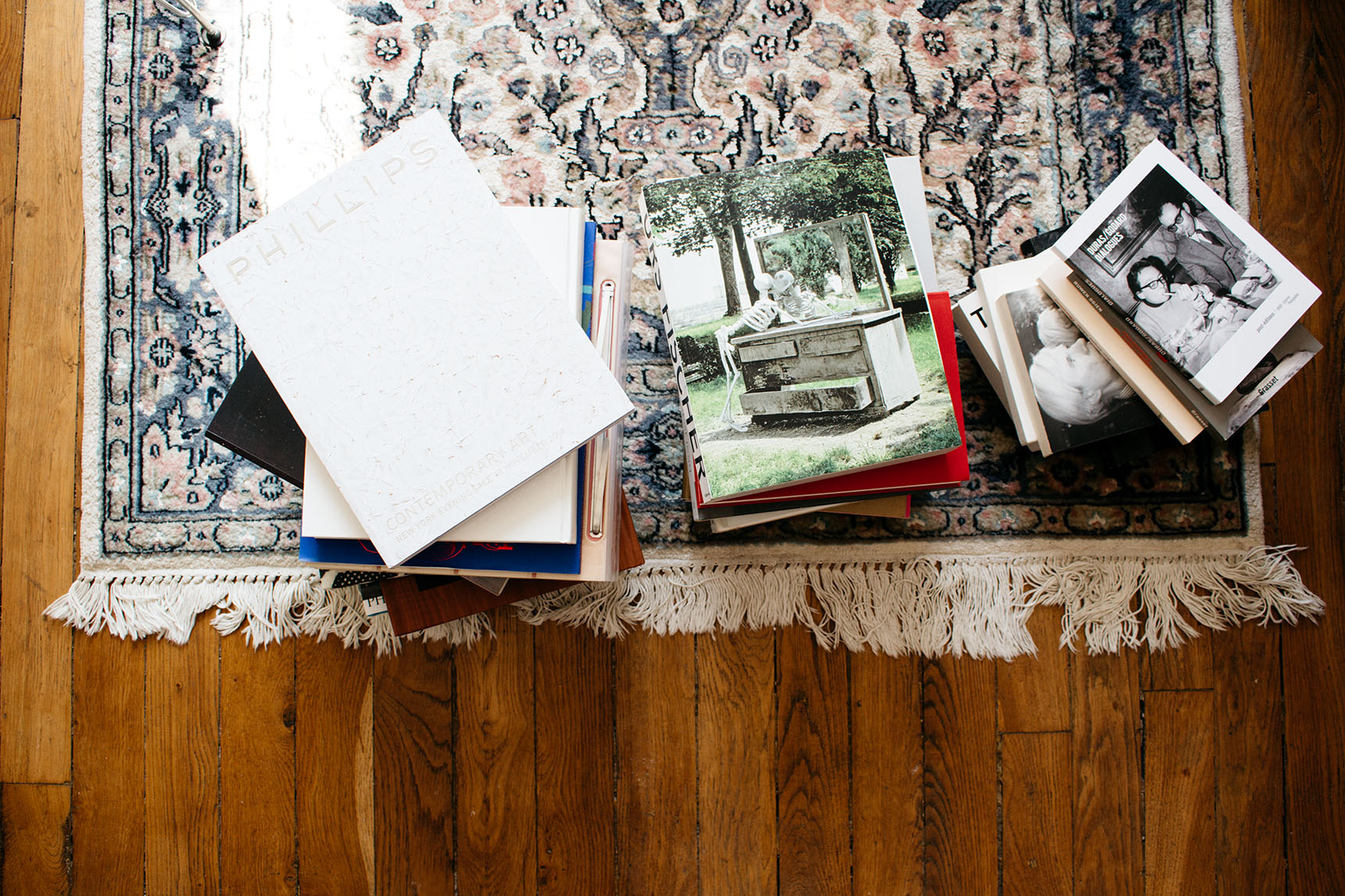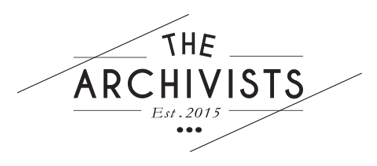
07 Apr TIMOTHÉE
Bookcase – Timothée had told us: “I would be very happy to welcome you but I have only 25% of my books in my Parisian apartment. I have more than 2.000 other books that are dispersed in different places.” After a quick mental equation, the appointment is taken. And when we arrive, we don’t regret it at all: there are books. A lot of them. In the living room: literature, philosophy and poetry. In the bedroom: books about art, cinema and monographs about contemporary artists and art exhibitions – each category is classified by alphabetical order. Timothée works as a curator and he cannot hide it: art is everywhere at his place. In the books but also in the numerous art works that are everywhere. We spend as much time looking at the paintings, drawings and photographs as looking at the books. The whole is skilfully combined. There are lots of things to see but it is never too much. We can guess the curator’s talent.
And so, where are the missing books? “They are dispersed between my parents’ place in the South of France, my godmother’s in Normandy and also in New York” where Timothée has lived a few years. Is he thinking about eventually grouping them together? “You know, when you love books, space is a bit of a problem… I can’t have them all here. And Timothée adds that books can be suffocating: “they contain stories after all”.
Childhood and readings – “Let’s start from the beginning” suggests Timothée who likes order and chronology. His first memory is linked to a textile book made for him by his grandmother. He can remember its softness under his fingers if he closes his eyes. Unfortunately the books fell from the window when he was 5. First heartache – but he got over it. Second memory from childhood: in his playpen, he loved too play with catalogues of tapestries. He liked the colours and the materials. We understand that books are something very sensorial for Timothée. Other memory: a book about great museums. With a particular taste for scenes of crucifixion and annunciation. His nurse never really got to understand his childhood readings. But it was the vocation. But art was a late passion. Before following this path, Timothée tried other ways, always more or less linked with is readings: he reads about Egypt and wants to become archaeologist. After an internship he changes his mind: “So boring!” He reads all the thrillers by Patricia Cornwell and he makes a decision, he will be a coroner. Here again, an internship: “but at the first drop of blood I saw dark spots and then all white”. He gives up. Indeed life is not always like in the books but they definitively have been for him a great way to learn the world. “But books can also make you feel very special and kind of old-fashioned, especially as a teenager when you are the only one to read!”
At the moment, Timothée prefers short texts such as poetry and short stories collections. “I also like writings by artists, interviews of artists and exhibition catalogues” he says. “When you can’t afford the work of an artist, you can at least have pictures of the work…”
Paper and Trappist – Timothée’s grandfather was a Trappist monk and was in charge of the monastery’s bookcase. His house was invaded with books that he loved to share with everyone. The bookcase as the place of knowledge and tradition. The taste for paper and books is therefore a family story recognises Timothée. “One of my greatest fears: that my bookcase would burn!” How we understand him!
A FEW BOOKS TO BORROW FROM TIMOTHÉE :
Of Mice and Men by John Steinbeck, Gallimard, 1939 : Published in 1937, it tells the story of George Milton and Lennie Small, two displaced migrant ranch workers, who move from place to place in search of new job opportunities during the Great Depression in California.
I’ll Be Your Mirror: The Selected Andy Warhol Interviews Entretiens by Kenneth Goldsmith, Da Capo Press: Writer and radio host Goldsmith presents the first collection of Warhol interviews, some never before published and all hilarious, arch, and indicative of Warhol’s peculiarly prescient and pervasive genius. Over the course of three decades, Warhol toyed with his interlocutors, vamping and evading, and concealing shrewd social and aesthetic insights within seemingly insipid remarks. Warhol was, indeed, a mirror, a spinning disco ball reflecting the superficiality and pathos of human existence, and Goldsmith’s meticulous and arresting collection, brilliantly introduced by Reva Wolf, is a key addition to the Warhol canon.
The Universal Addressability of Dumb Things, Marck Leckey, Haylawrd Publishing: Curated by Turner Prize-winning artist Mark Leckey this exibithion explores the theme of “techno-animism,” whereby the inanimate comes to life through technology. Leckey juxtaposes contemporary art with machines, archeological objects and historical documents.



